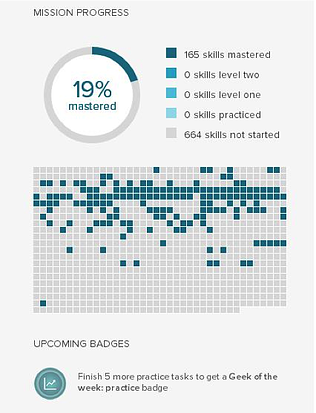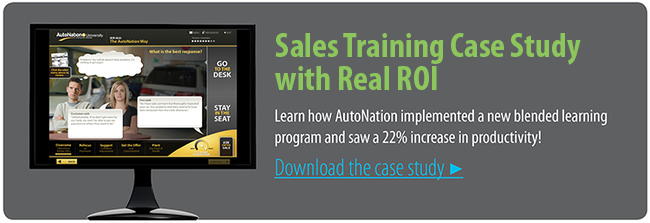Blog
3 Real-Life Lessons Learned from Difficult On-The-Job Challenges
by Hannah von Bank, relationship management assistant First impressions are often the most lasting―what does your onboarding program say about your ...


5 Common Missteps In Onboarding Programs
By Hannah Hunter | September 11, 2014 | Custom Learning | 0 Comments
.png?width=120&height=120&name=hannah(250).png)
First impressions are often the most lasting―what does your onboarding program say about your organization?
Research has shown that effective onboarding increases employee retention and productivity while ineffective programs waste money and can result in burnout and increased turnover. With 25% of the United States workforce transitioning between jobs every year, creating an engaging and informative new hire orientation should be a key business initiative for employers.
So what does “effective onboarding” really mean?
Specific goals may differ between organizations, but based upon input from both learners and managers―high-level objectives of a holistic program would probably include:
- Helping the employee to identify with the employer’s culture, values, and priorities
- Building an optimistic attitude towards the company
- Encouraging socialization and creating a sense of belonging
- Reducing new employee anxiety
- Setting performance expectations
- Decreasing the learning curve
- Administrative housekeeping (benefits enrollment, etc.)
With these goals in mind, how well does your program stack up? If your answer is anything other than “Awesome!” fear not—you are not alone. Allen Interactions has been in the training business for over 20 years, and in that time we’ve seen literally HUNDREDS of onboarding curriculums for a huge variety of industries. Here are some of the most common missteps we see:
1. Information overload—or―the dreaded all-in-one-day orientation
The first day of a new job is always a little overwhelming and having to complete 8 hours of Powerpoint-based e-learning and benefits forms in one sitting doesn’t help matters. Even the most motivated employee―that mythical being who takes careful notes and would NEVER, EVER click “Next” before they are finished reading all of the text on a page because they know how important it is—can only absorb so much at once. There is no getting around it. New hire onboarding is one of the most comprehensive types of training we have to design, for which is precisely why it cannot be completed and understood effectively in one day, or even one week. An ideal onboarding program should not take up more than 2 hours a day of an employee’s time and should be spaced out for 2-6 months. This format takes the pressure off your new hires to know everything at once and allows for plenty of time for learners to digest information, ask questions, and incorporate it into their work.

2. Taking the team out of training
Meeting and socializing with colleagues is often an overlooked component of onboarding, but it plays a huge role in reducing new hire anxiety and creating a sense of belonging within your organization. After all, isn’t feeling welcome what orientation is all about? An experienced manager or teammate can be an invaluable resource when it comes to answering questions, modeling appropriate behavior, and most importantly, helping your hire feel less like the new kid at school. Integrating a mentoring program, social events, and team discussions into your training portfolio is a cost effective way to make this happen. Your experienced employees can also serve as valuable sound boards to developing learning (after all, they’ve been through it before) and could even take the lead in developing resources of their own―like an FAQ or social media group for new hires.
3. Making it all about the company
Presumably your learners were hired because they have unique personalities, ideas, and skill sets that will bring value to your organization. A great way to completely disregard that is to focus entirely on “this is what we do and here is where you fit” in a unilateral, one-size fits all manner. Avoid this pitfall by sprinkling your training with opportunities for your learners to share their ideas, ask questions, make personal development goals, and reflect on the value they bring to the company. Fellow Allen Interactions’ colleague, Ellen Burns-Johnson, wrote an awesome piece on learner-centered design that I encourage you to check out if you haven’t.
4. Negative/inaccurate representation of corporate brand/culture
This goes way beyond the typical “look and feel” factors that are addressed when branding a course. How do you want your learners to feel about your organization and its culture after completing onboarding? Does your answer include any of the following: boring, tedious, irrelevant, mind-numbing, unremarkable? Probably not. And yet these are the words we hear learners use to describe their orientation experience ALL OF THE TIME.
One of the main goals of onboarding for most organizations is to help new employees identify with corporate values and culture. It is their first taste of the company experience and managers and L&D professionals have been given the unique opportunity (and responsibility) to communicate the essence of their organization in a memorable and relatable way. If your organization positions itself as a fun, flexible and innovative place to work, then demonstrate that through engaging interactivity, discussions, and personalized lessons. Does your organization have a rich history? Create an interactive timeline for learners to explore. How you tell your story is up to you, but for Pete’s sake, tell a story!
5. Not setting performance expectations
Hopefully at this point in the process your new hire has some idea of what their job entails—but do they really understand what it means to be successful in their position or how their supervisors measure that success? I don’t mean a list of job responsibilities or the “50 reasons you can be fired” compliance stuff―that is why Employee Handbooks were invented. I’m talking about the “why’s” and “how’s” of working day-to-day in a given position. Your call center representatives may know that they have to make X amount of client calls per day, but do they know why? After all, quotas are calculated for a reason. Letting your employees know that they are not simply arbitrary numbers can help them understand how their hard work fits into the bigger picture. Can an employee who has been at the company for two months expect a different level of immediate success than one who has been there for 10 years? Almost always. Give new hires a realistic expectation of the trials and tribulations of their first few months on the job and let them know that, for now, their main responsibility is to learn―not to do everything perfectly right away. Setting the right expectations will reduce anxiety, foster open communication, and keep new hires from thinking they’ll be judged if they ask for help.
Onboarding is more than just an HR requirement or a list of core values—it is your organization’s chance to tell its story. It is an opportunity to welcome, to teach and to listen. Your onboarding curriculum will set the stage for all future training experiences, so why not make a good first impression?
Is there anything I missed? Let me know in the comments below!
Want to share this post? Here are some ready made tweets!
Click to Tweet: 5 Common Missteps in Onboarding Programs #employeetraining http://hubs.ly/y07TgB0 by @HannahVB1
Click to Tweet: So what does “effective onboarding” really mean? http://hubs.ly/y07TgB0 via @customelearning #employeetraining #newhiretraining
Click to Tweet: Onboarding is more than just an HR requirement—it is your organization’s chance to tell its story. http://hubs.ly/y07TgB0 #employeetraining

About the Author: Hannah Hunter
Hannah Hunter is an instructional writer at Allen Interactions. When she’s not sharing her passion for life-long learning, Hannah enjoys painting, experimenting with new recipes, and volunteering as a creative writing tutor for middle and high school students. She also frequently blogs on Allen Interactions’ e-Learning Leadership Blog.
Comments
Would you like to leave a comment?
Related Blog Posts

By: Hannah Hunter | Aug, 2014
Category: Custom Learning

Blog
Free Online Courses to Exercise Your Brain this Summer
by Hannah von Bank, relationship management assistant First impressions are often the most lasting―what does your onboarding program say about your ...
By: Hannah Hunter | Jul, 2014
Category: Custom Learning
.png?width=316&name=hannah(250).png)
Blog
Tips for Developing Successful Leadership Training
by Hannah von Bank, relationship management assistant First impressions are often the most lasting―what does your onboarding program say about your ...
By: Hannah Hunter | Apr, 2014
Category: Custom Learning


